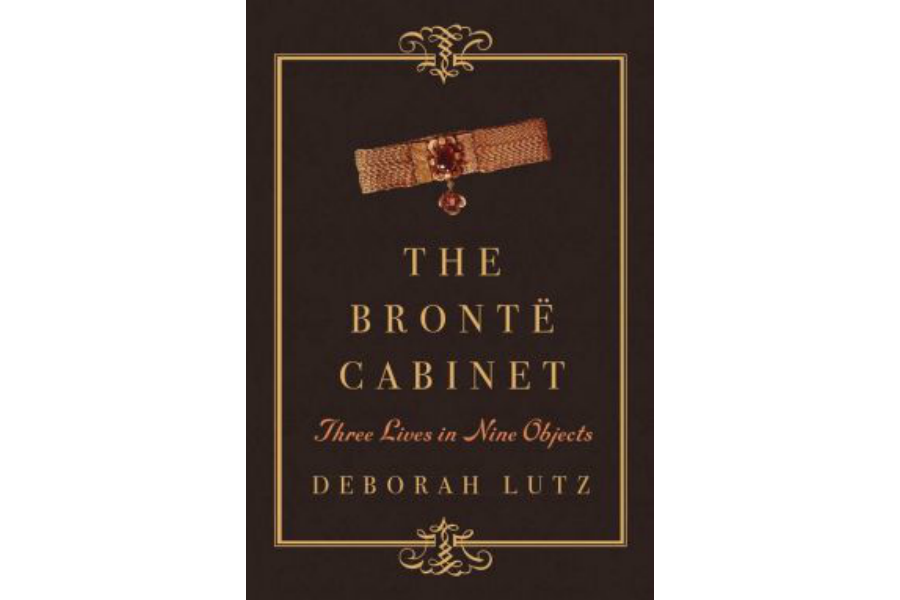'The Brontë Cabinet' sets the three fabled sisters in context
Loading...
Gentle reader, beware: The Brontë Cabinet is no ordinary biography. Anyone wanting direct narration of the Brontë sisters’ lives should look elsewhere. Those who do read this book will follow the Brontës but will also be redirected into shadowy spaces where bodies have left stains, feet have passed, and locks of hair have been hoarded.
In these pursuits, Deborah Lutz is a bit like a 19th-century medium gathering the objects of the dead at a séance. She gathers and interprets the objects, actions, and landscapes that inflected a family of authors, of women, of nineteenth-century thinkers. Her auguries turn on things as varied as potato peelings, dog collars, albums, sewing boxes, and hiking trails. She investigates the places where objects provoke an almost physical sense of encounter. She reads things to see what they might tell her about life and about literature. This is to say, she leaps between objects and disciplines to craft an unusual cultural history – not just about a family of authors but about reading itself.
This is a rich pursuit, and not unsurprisingly, Lutz’s first chapter is about books themselves: Lutz offers a close reading of how the Brontës (and early Victorians generally) used and treasured them, how they valued, touched, wrote in, and stored leaves and letters in their volumes. Because the Brontë sisters were born in an era when all paper was extremely dear, Lutz explores what it meant for them to hoard paper and use books in play.
During the 1820s the Brontë sisters (Anne, Charlotte, and Emily, possibly occasionally aided by their brother, Branwell), began producing literally hundreds of miniature books, some including watercolor illustrations, many with a private handwriting that was too small for adults to read. Lutz suggests what these objects might have meant to budding writers: “Minuscule books initially fit well with their child bodies, as if the books were emanations of those undersized fingertips and palms. Or little worlds for small bodies to climb into, open sesame.”
Lutz reads this close-held bodily magic not only through its productions in an early-19th-century childhood but also off the cultural position of paper in the surrounding society. She writes that “the closeness of body and book was an ordinary feature of daily life in the nineteenth century, a relationship no longer obvious today.... Through a long chain of recycling, clothes that kept limbs covered became reading matter. Printed paper was then reused to line cupboards and pie plates ... and [as] toilet paper.”
Lutz argues that the life stages of books intertwined them “with fleshly parts other than eyes.” Being near paper was like being near bodies and their functions – ingestion, digestion – and paper and books could hold traces of each body’s unique presence. This worldview makes it into written texts themselves: For instance, in Charlotte Brontë’s "Villette", Paulina feels an almost dangerous physical intimacy with a man she hasn’t seen for decades, simply by opening one of his books.
In her next chapter, Lutz enters another daily world, one of housework and embroidery, again asking what it might tell us about the makings of literature. Sewing was, she reminds us, what many hours of any woman’s life were made of, whether or not that woman was scribbling out timeless literature on the side. Writing and sewing often became proxies for each other: The Brontës often wrote letters about the large amount of sewing they had to do.
Conversely, when the Brontës did find a moment to write, they often found themselves called away by the appearance of needing to attend to household chores, especially in a time when “it was not thought proper for young ladies to study very conspicuously.” One remembers that, like the Brontë sisters, Jane Austen was known to put down her novel and pick up her needle as soon as company arrived.
Yet Lutz notes that stitchery is also a fair proxy for the writing process. (One thinks of Mary Shelley threading the pieces of "Frankenstein" together while also sewing baby clothes). As Lutz notes, “It is no accident that the character who ‘tells’ most of the story of 'Wuthering Heights' is the servant Nelly Dean, who sews as she spins out the tale." In Emily Brontë’s novel, “storytelling and needlework develop in tandem, the rhythms of one informing the cadence of the other. The female servant at her domestic work is given the agency to frame, reshape, and knot together the life-plots of those around her, something like the novelist herself.”
Unsurprisingly, the child’s sampler links to the poem or short story; the thread becomes chronicler, and even descriptions of how characters hold needles become ways of accessing those characters’ inner lives.
'The Brontë Cabinet' makes many such circuits. Despite its being at once accessible and scholarly, one does occasionally feel that Lutz assumes her readers to already know the full outlines of the Brontë lives. The plot points of those three lives are always inferred through the objects – and even for this longtime fan, a tad more direct narration might have occasionally been of use. But it’s hard not to be touched by these compassionate investigations into traces, a method that itself seems to have more than a bit of the 19th century informing it.
With deft care, Lutz weaves her authors back into their daily contexts, and from there, the stories they crafted speak even more urgently across time.







